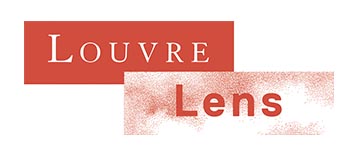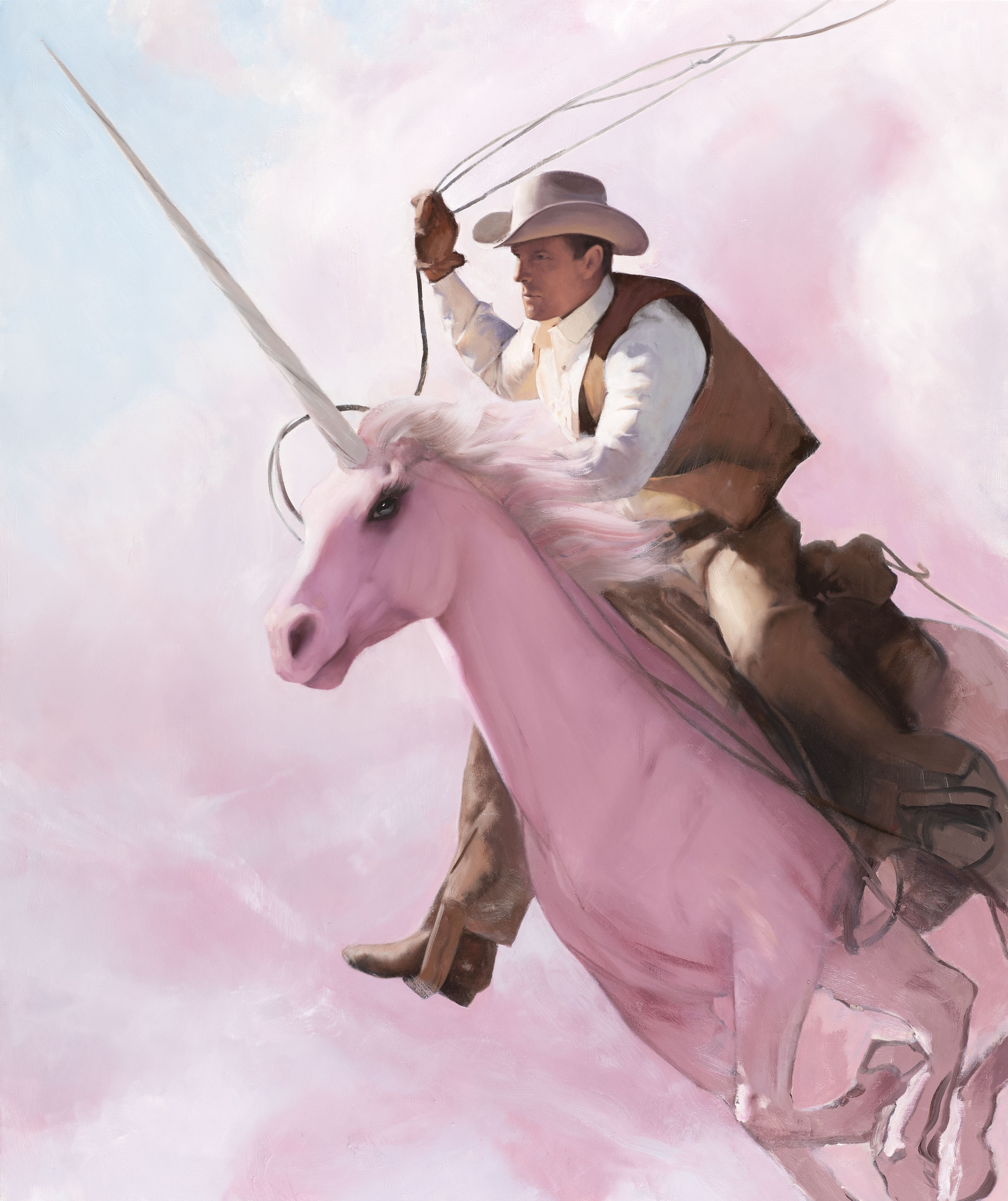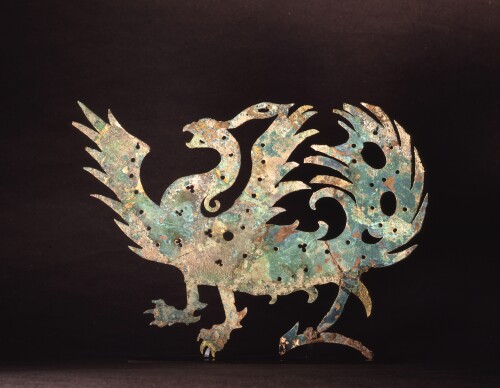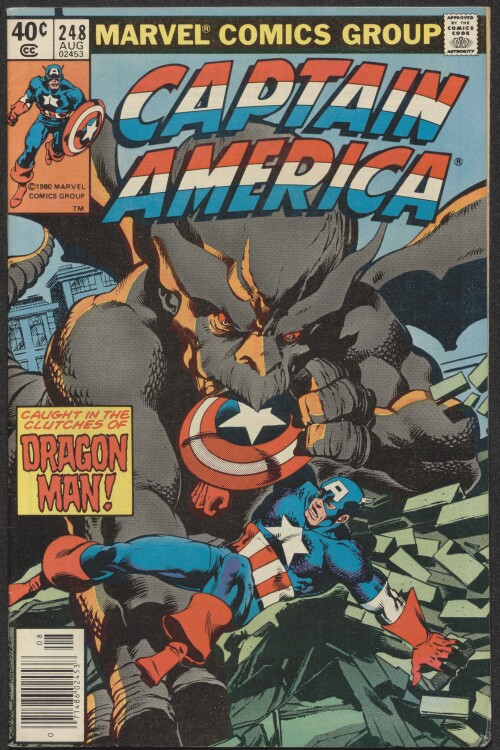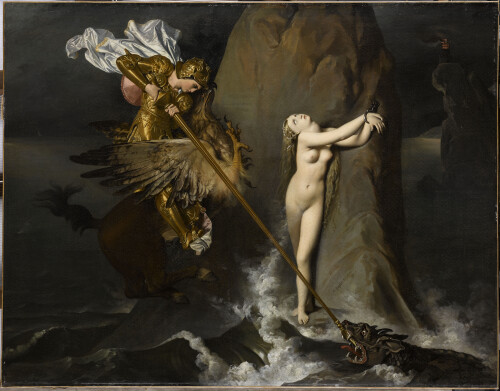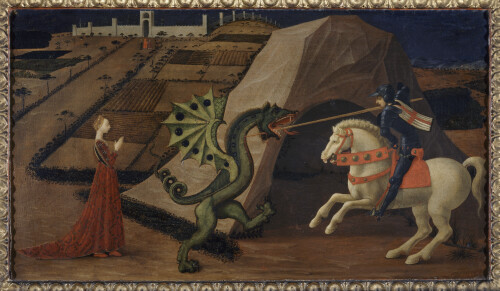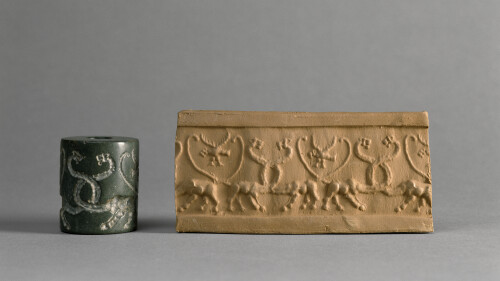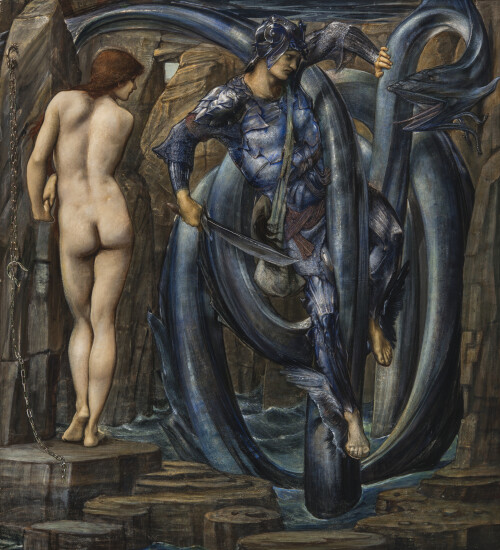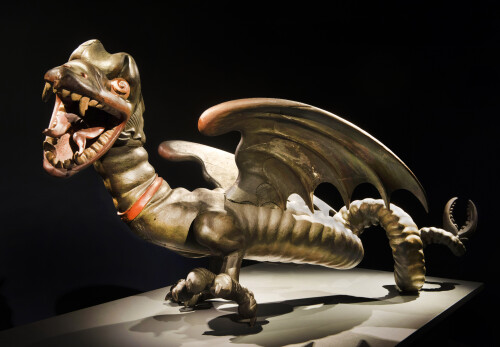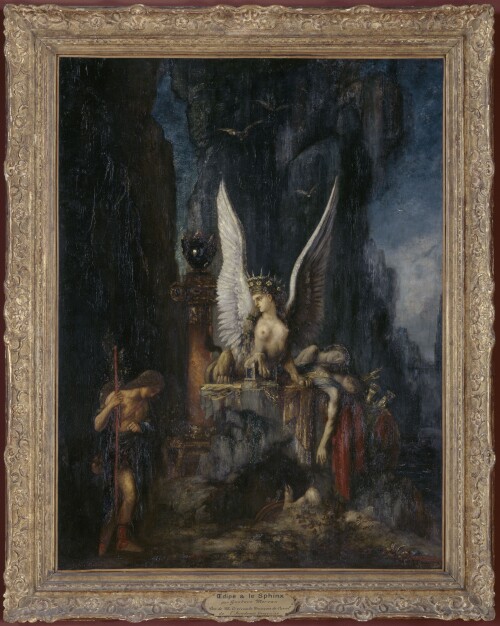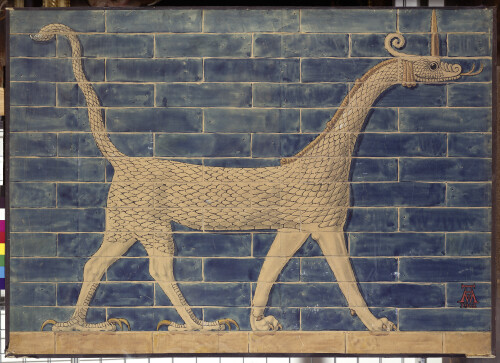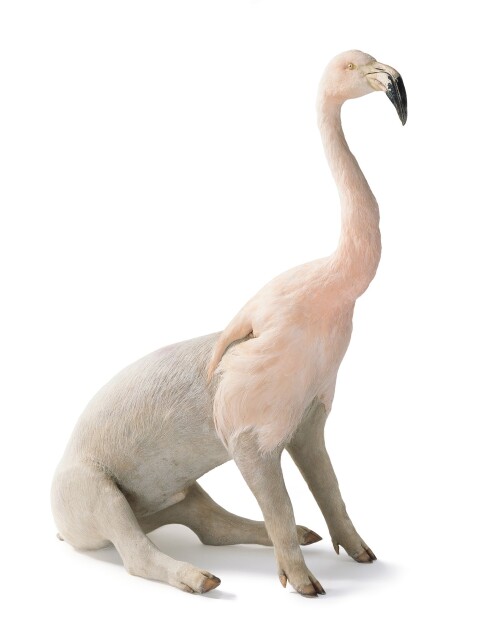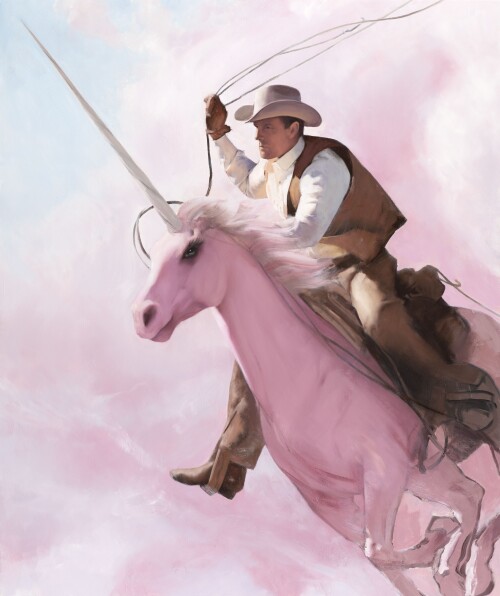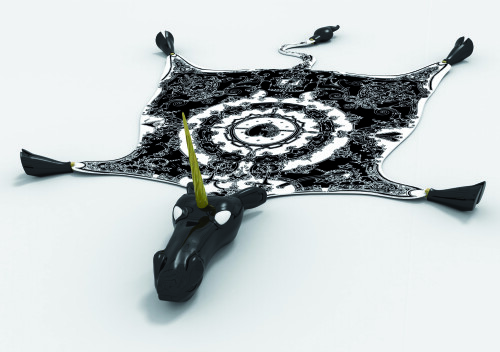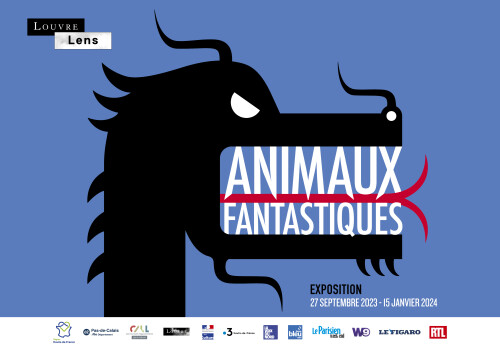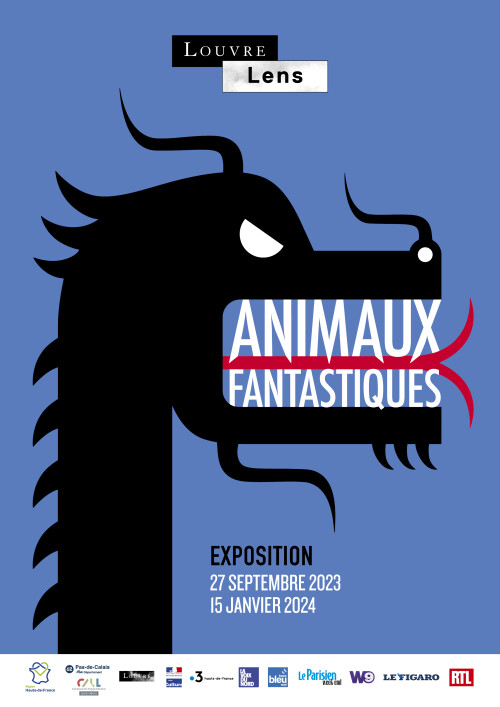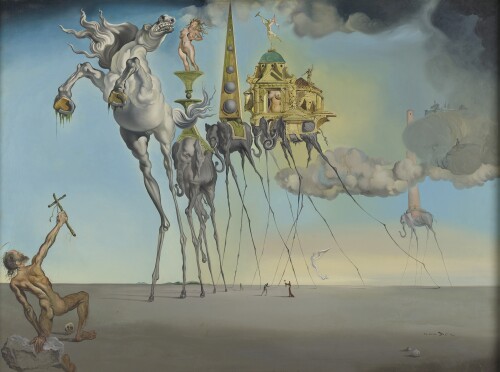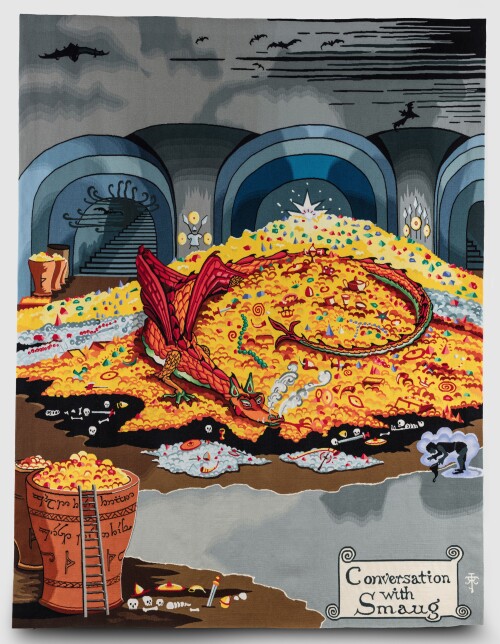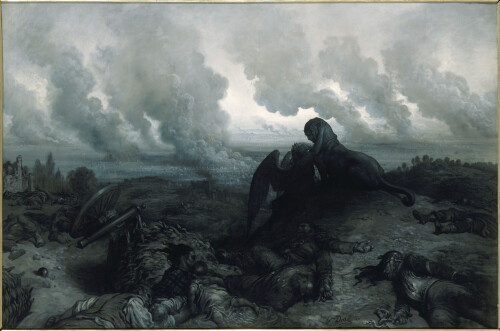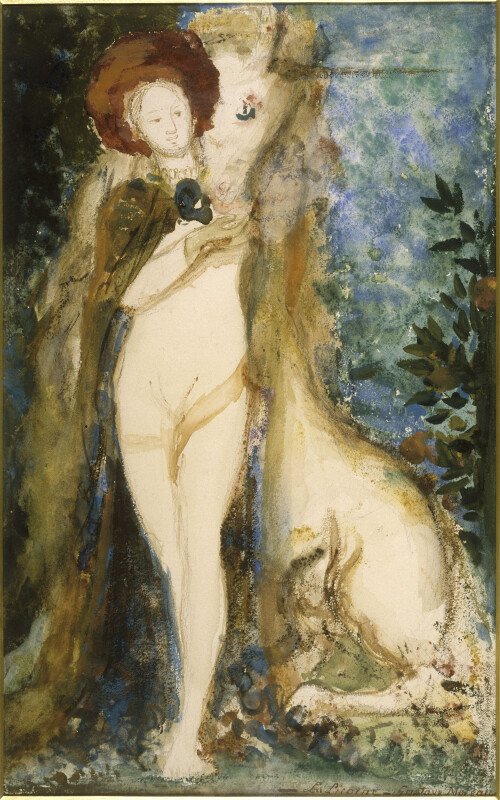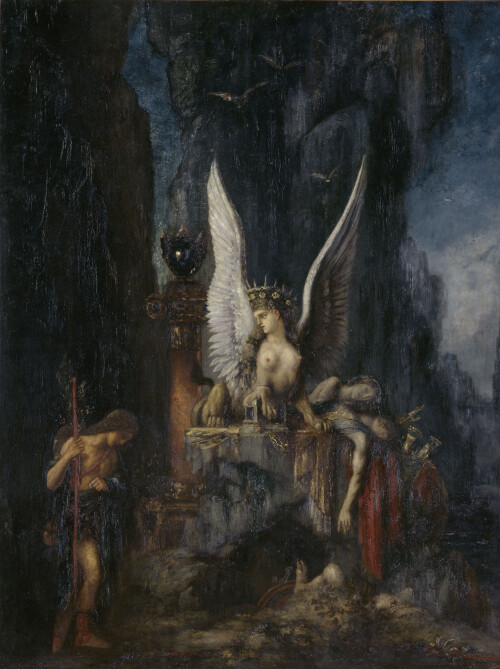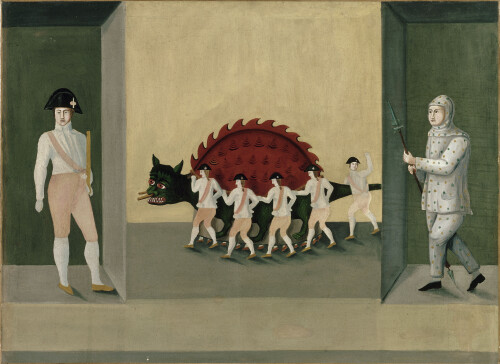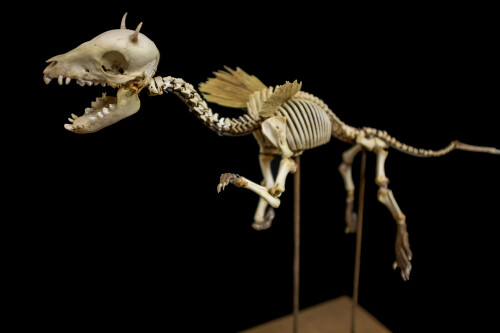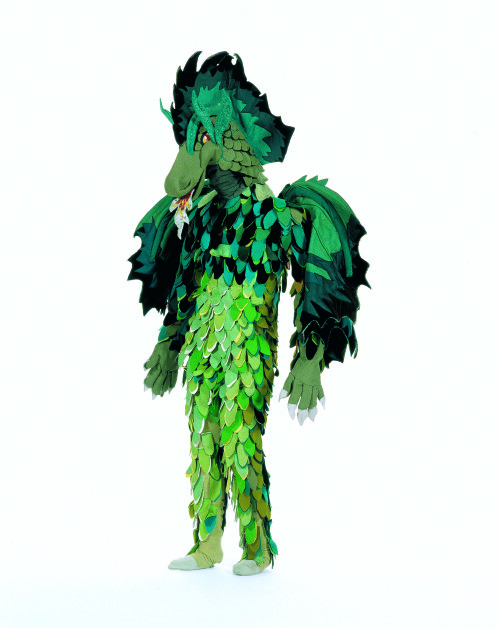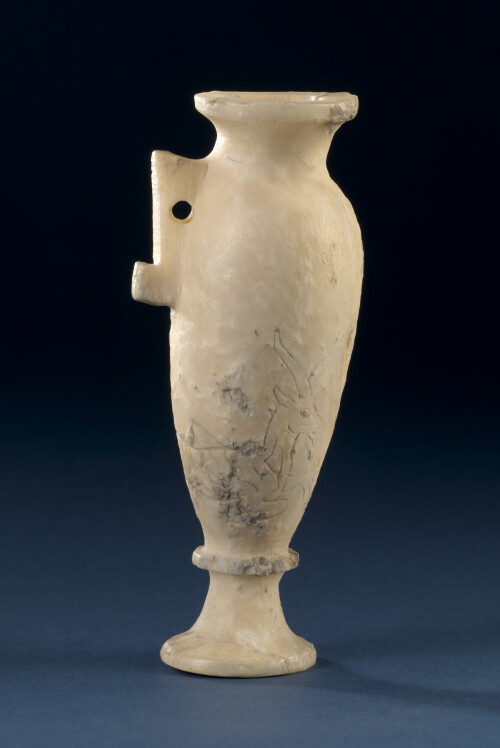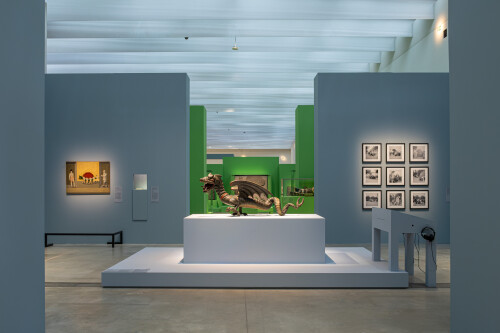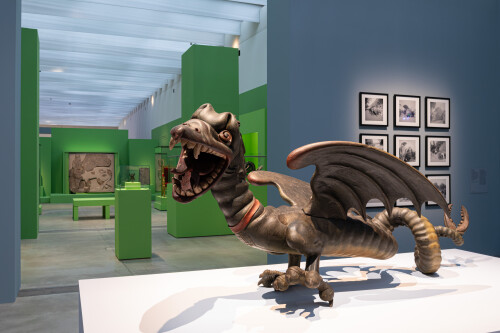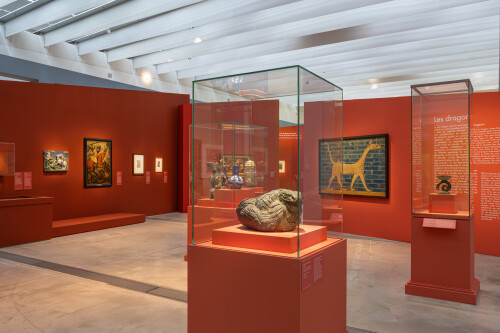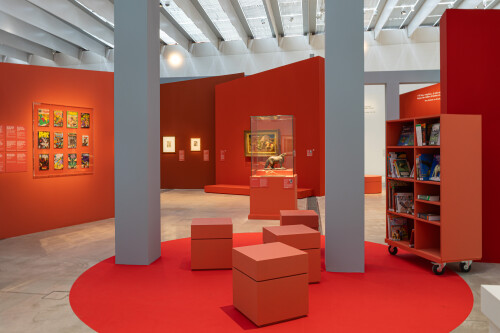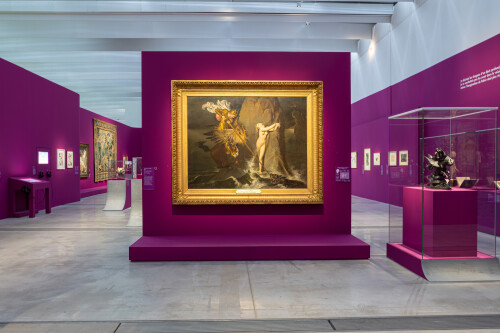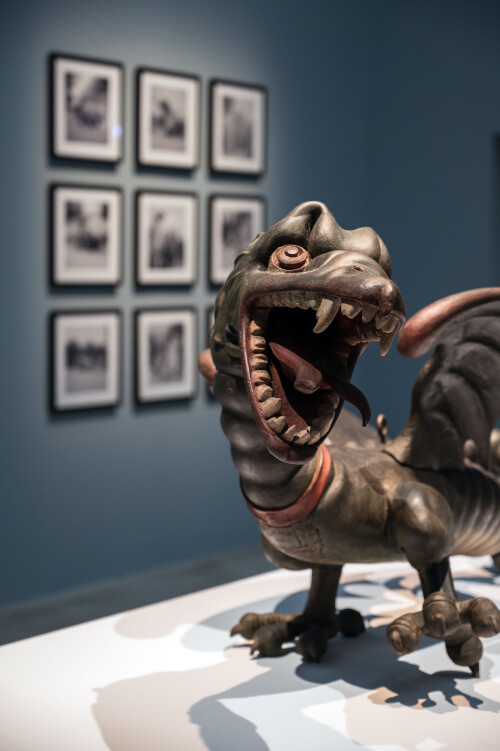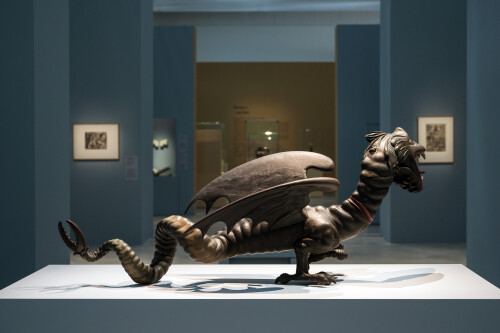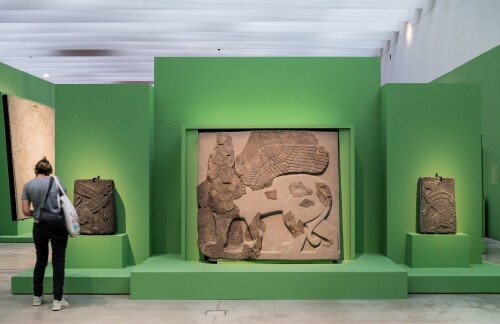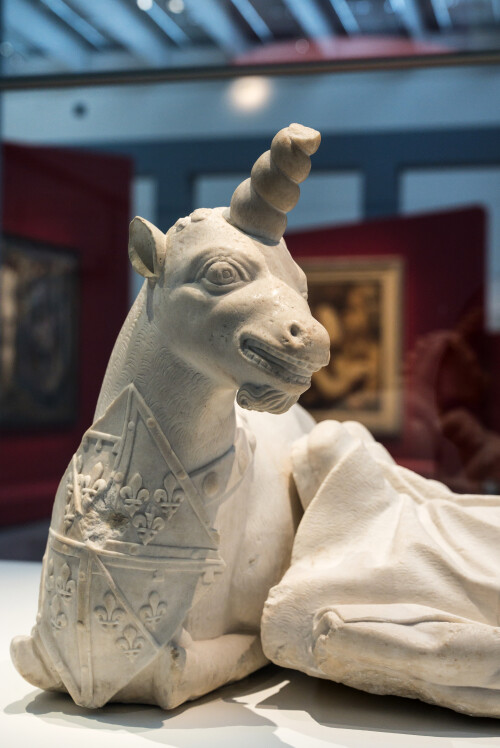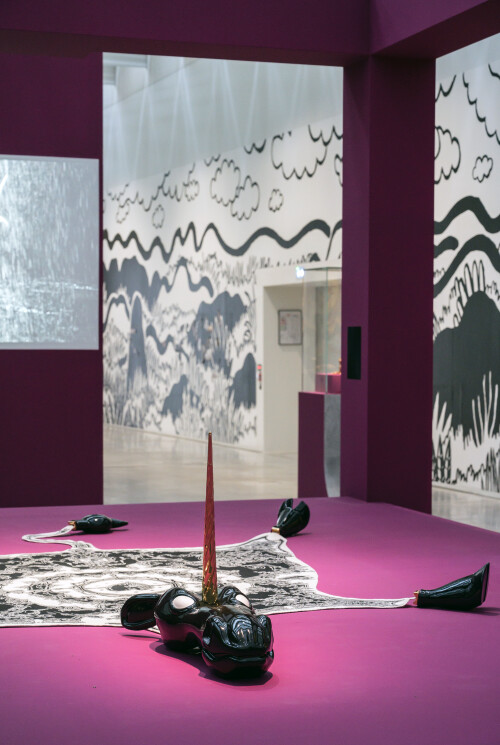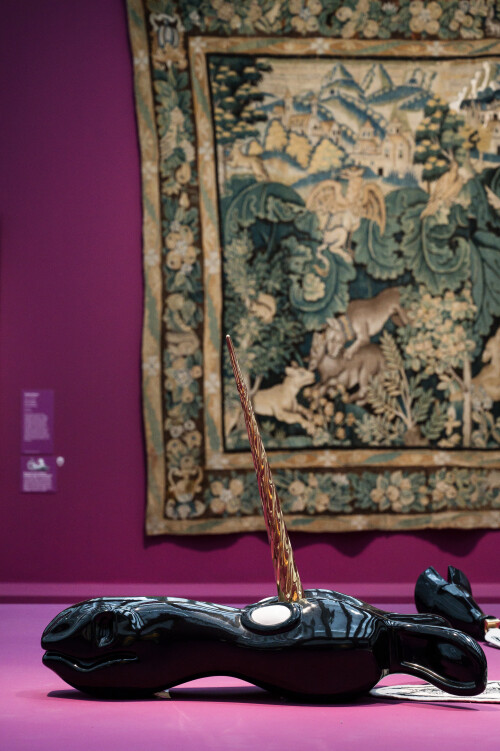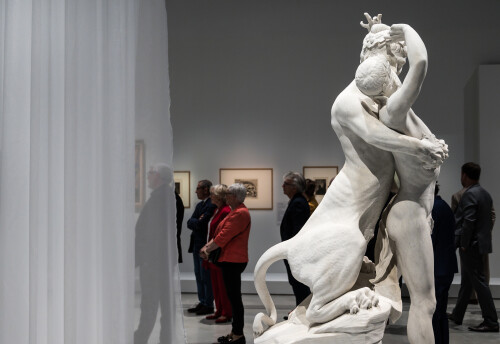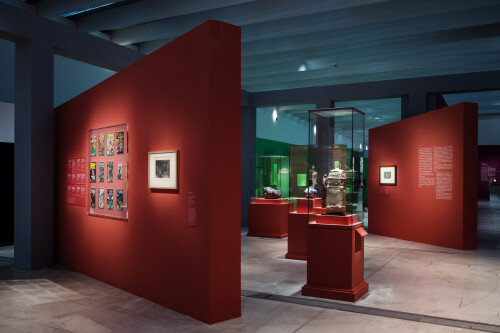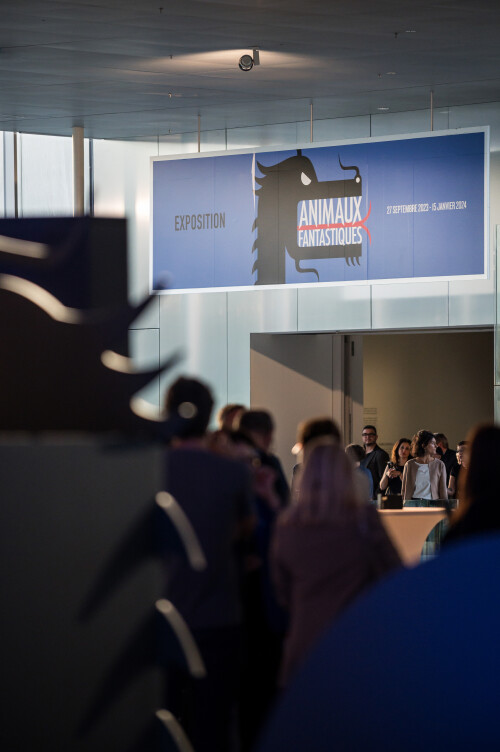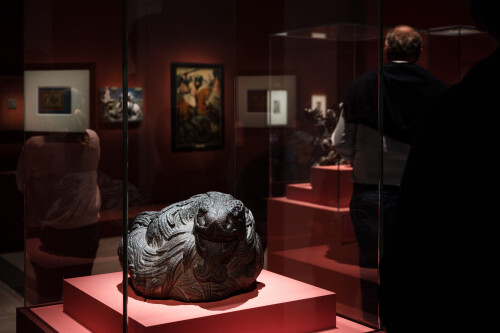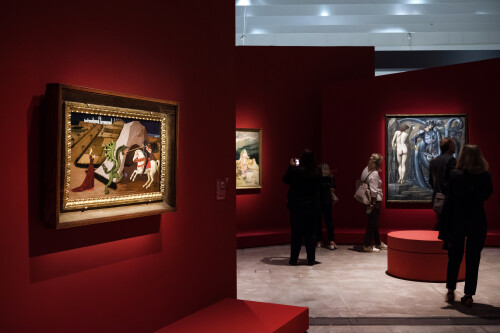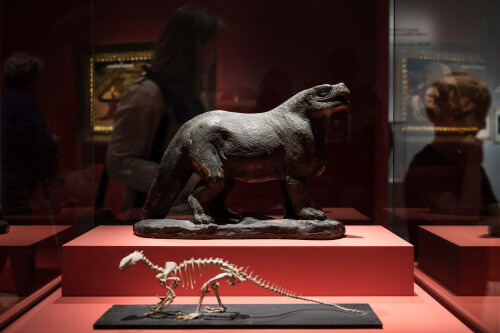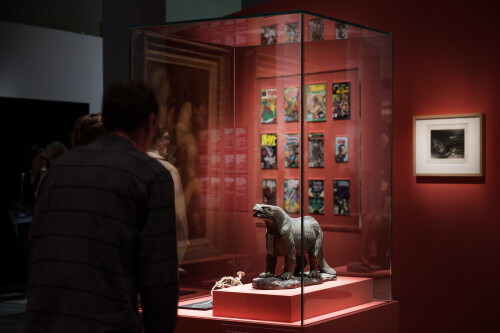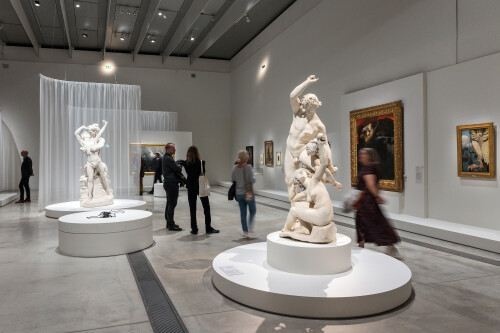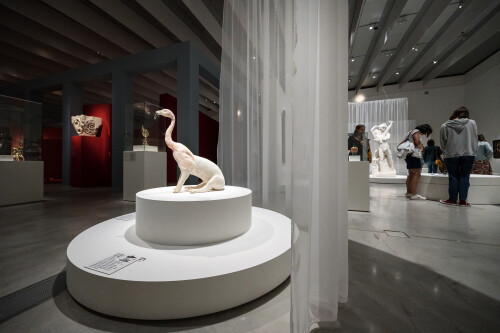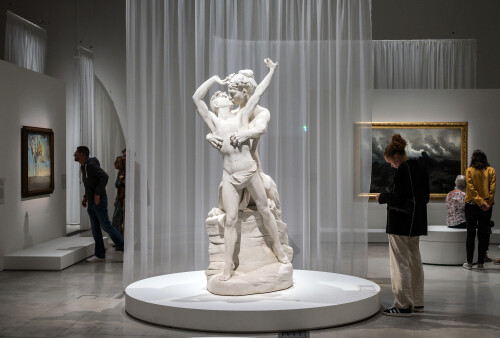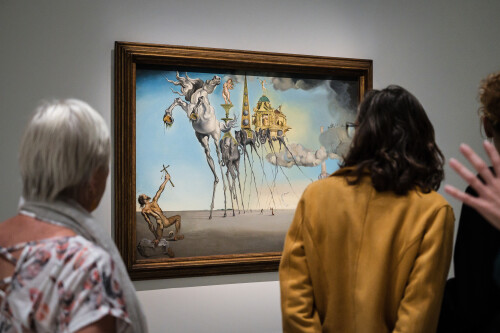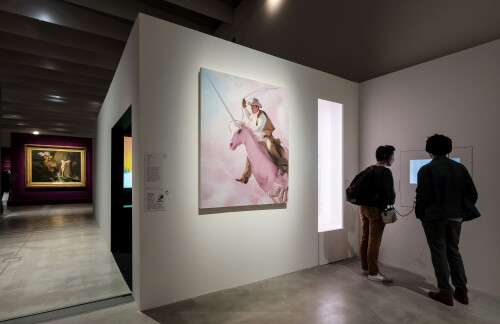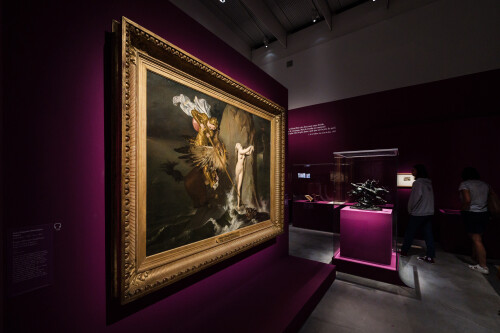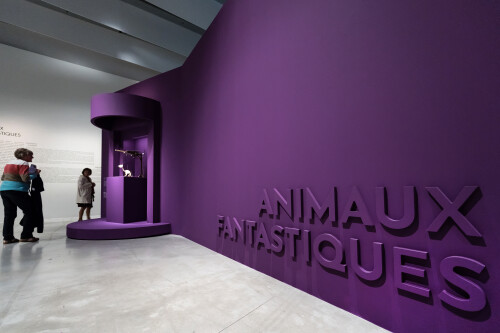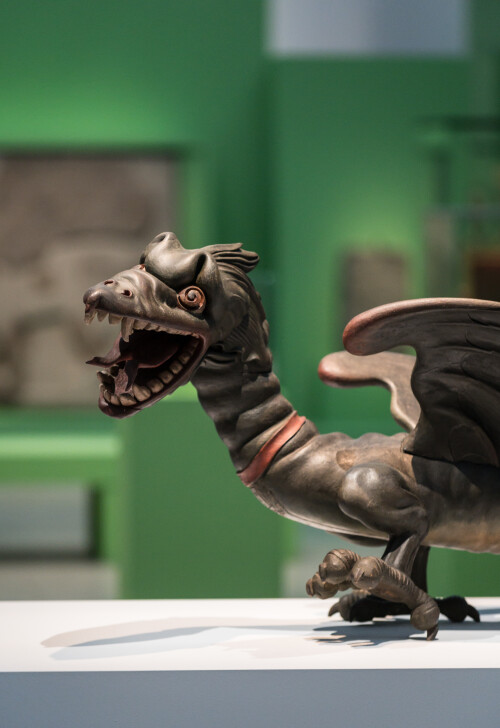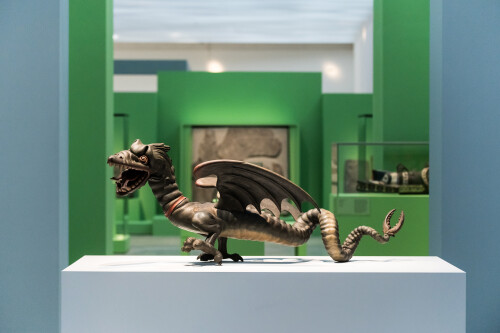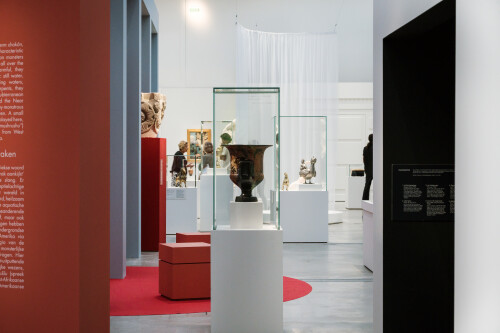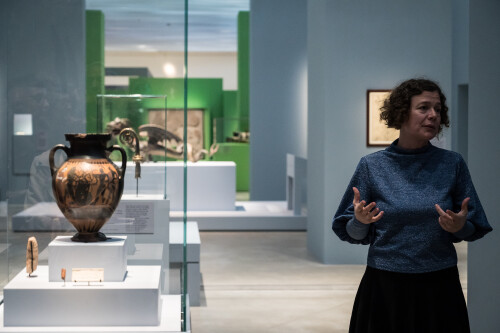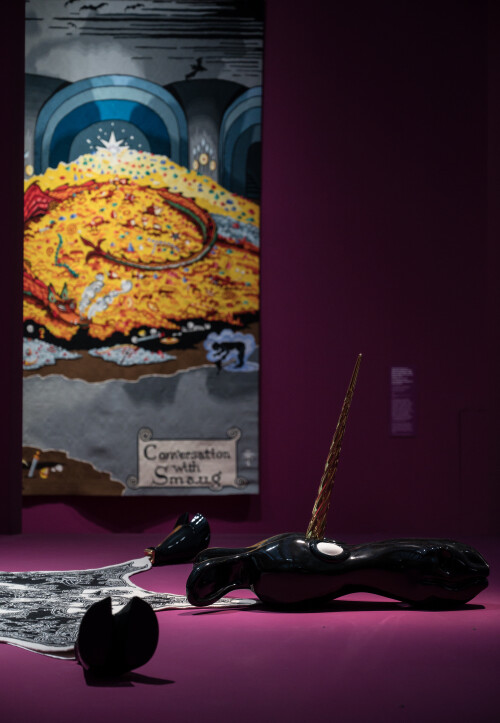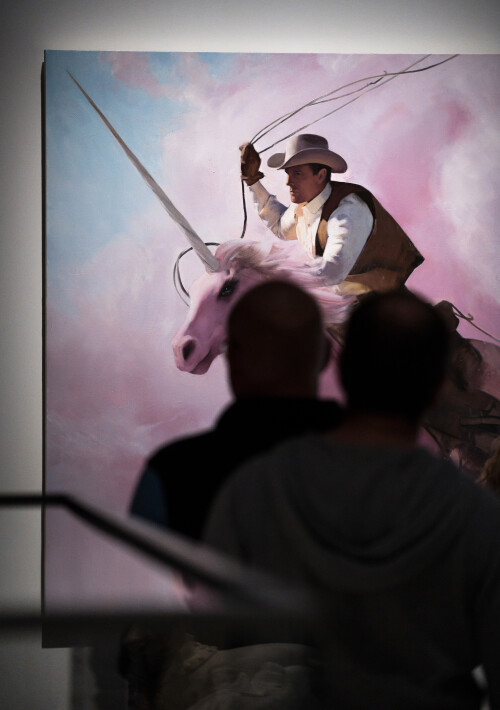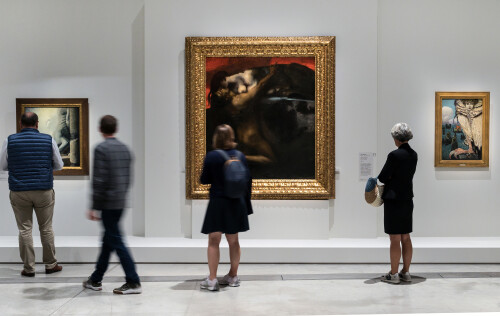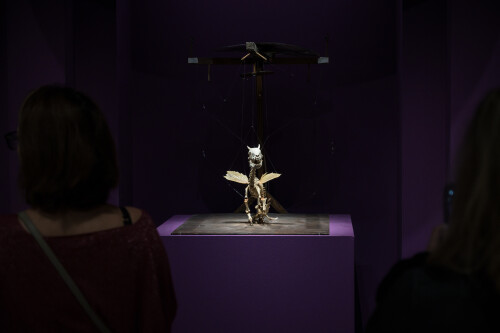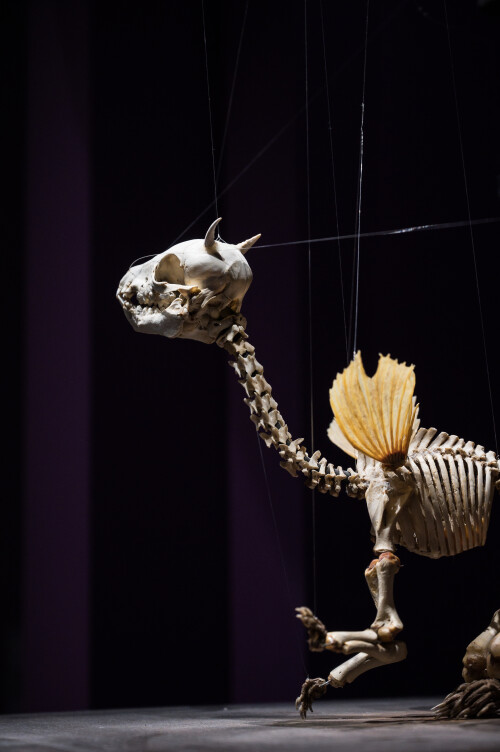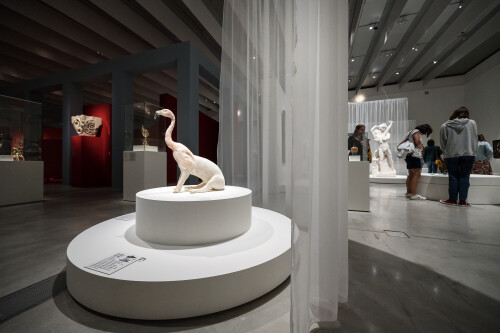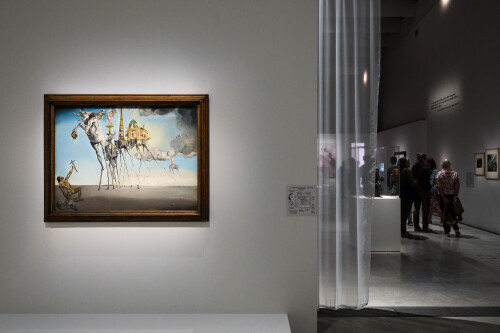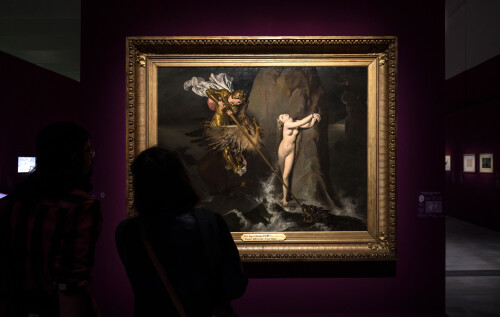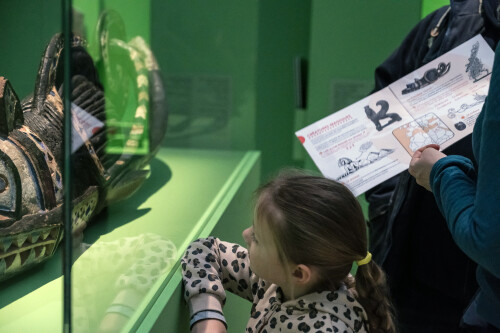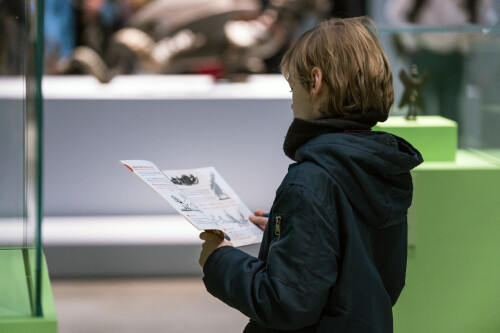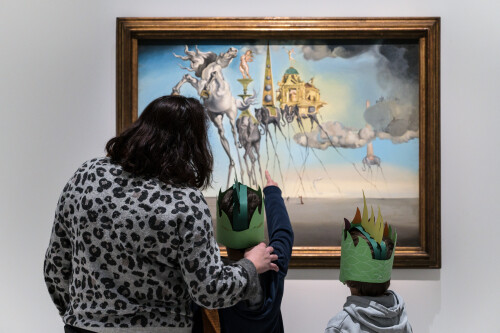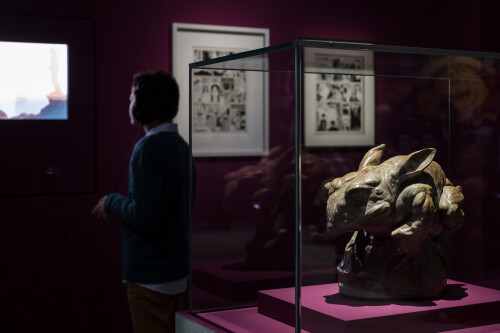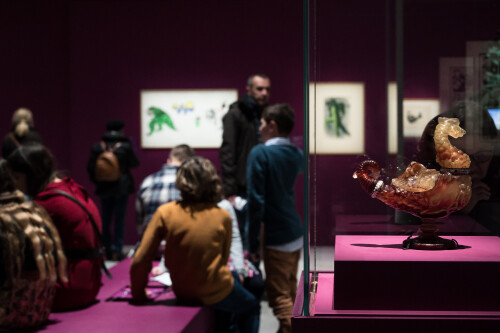ANIMAUX FANTASTIQUES
27 SEPTEMBRE 2023 - 15 JANVIER 2024
Dragons, griffons, sphinx, licornes, phénix… Présents depuis l’Antiquité, les animaux fantastiques peuplent les moindres recoins de notre monde contemporain, des films et dessins animés aux objets du quotidien. Tour à tour images de terreur ou d’admiration, expression de notre inconscient camouflé ou de nos angoisses, ces créatures souvent hybrides portent en elles une ambiguïté fondamentale. Qui sont-elles ? D’où viennent-elles ? Que signifient-elles ?
Elles partagent avec la faune réelle un pouvoir de fascination sur l’être humain. On leur confère une proximité avec la nature, une sauvagerie mêlée de sagesse. Ce ne sont pas pour autant des animaux comme les autres. Ils s’en distinguent par leur apparence. Gigantesque, démesuré, difforme, leur corps adopte les caractéristiques de plusieurs animaux : corps de cheval et ailes d’oiseaux, aigle à tête de lion…
Cette physionomie extraordinaire reflète des pouvoirs surnaturels. Les animaux fantastiques incarnent les forces élémentaires de la nature : eaux tempétueuses, rafales colériques, mais aussi ruisseaux tranquilles, terre nourricière. Ils représentent leur immensité, leur violence, leur beauté et leurs éclats. Certains possèdent un visage, des mains ou des jambes, qui les rattachent au monde des humains tout en évoquant distance et dangerosité.
Riche de près de 250 oeuvres – sculpture, peinture, objets d’art mais aussi cinéma et musique –, de l’Antiquité à nos jours, l’exposition propose un voyage à travers le temps et l’espace pour raconter l’histoire des plus célèbres de ces animaux à travers leurs légendes, leurs pouvoirs et leur habitat. Elle questionne nos rapports passionnés à ces êtres dont la présence irréelle semble plus que jamais nécessaire.
Le parcours explore, de façon thématique, les différentes facettes de nos rapports aux créatures fantastiques. L’exposition démarre par un retour aux origines de ces animaux imaginaires, qui émergent dès la Préhistoire et incarnent les terreurs sacrées des humains face au vertige de la nature. Dès l’Antiquité, ils sont au coeur de combats fondateurs qui représentent, sous différentes formes, la lutte de forces opposées, notamment celles du bien contre le mal. Outre leur apparence étrange et souvent hybride, les animaux fantastiques ont souvent pour caractéristique principale d’être magiques : ils protègent les peuples et souverains, et veillent sur la frontière entre le monde des vivants et celui des morts. Le dragon occupe une place à part dans cet écosystème : son apparence fluctue selon les siècles et les civilisations, avant d’être progressivement codifiée dans l’art européen puis dans les arts visuels de la culture populaire. Vivant aux marges du réel, les animaux fantastiques contribuent également à incarner une autre forme de société possible. Imprégnant aujourd’hui plus que jamais la pop culture et la fantasy, ces monstres de la nuit des temps nous interrogent quant à nos peurs et nos aspirations, et un besoin de ré-enchantement du monde.
Commissaire générale :
Hélène Bouillon, conservatrice en chef du patrimoine, directrice de la conservation, des expositions et des éditions du Louvre-Lens
Commissaires associées :
Jeanne-Thérèse Bontinck, cheffe de Projet Patrimoine, Ville d’art et d’histoire, Périgueux
Caroline Tureck, chargée de recherches et de documentation, Louvre-Lens
Assistées de :
Yaël Pignol, médiateur Patrimoine & Jardins - Référent scientifique, Cité des Electriciens, Bruay-la-Buissière
Scénographie : Mathis Boucher, architecte-scénographe, Louvre-Lens
***
FANTASTIC ANIMALS
27 SEPTEMBER 2023 – 15 JANUARY 2024
Dragons, griffins, sphinxes, unicorns, phoenixes: present as early as Antiquity, fantastic animals inhabit the tiniest recesses of our contemporary world, from films and cartoons to everyday objects. By turns images of terror or admiration, expressions of our hidden unconscious and our anxieties, these often hybrid creatures contain within them a fundamental ambiguity. Who are they? Where do they come from? What do they mean?
They share with real fauna the power to fascinate people. We confer on them a closeness to nature, a wildness mingled with wisdom. Yet these are no ordinary animals. They differ in their appearance. Gigantic, excessive and deformed, their bodies adopt the characteristics of several animals, such as a horse’s body with the wings of a bird or an eagle with a lion’s head.
This extraordinary physiognomy is a reflection of their supernatural powers. Fantastic animals embody the elementary forces of nature: stormy waters and choleric gusts of wind, as well as tranquil streams and the nourishing earth. They represent their immensity, their violence, their beauty and above all their excesses. Some of them have a face and hands and legs, which link them to the world of humans while evoking distance and danger.
Featuring more than 250 works – sculptures, paintings and objets d’art, as well as films and music – ranging from Antiquity to the present day, the exhibition offers a journey through time and space, retracing the history of the most famous of these animals through their legends, their powers and their habitats. It explores our passionate relationships with these creatures whose unreal presence seems more than ever necessary.
The exhibition offers a thematic exploration of the various facets of our relationship to fantastic creatures. It starts by going back to the origins of these imaginary animals, which emerged in prehistory and embody the sacred terrors of humans in the face of the impressiveness of nature. In Antiquity, they were central to the founding combats that represented, in different forms, the battle between opposing forces, notably those of good and evil. In addition to their strange, often hybrid appearance, fantastic animals were often above all magical: they protected people and rulers, and they watched over the frontier between the world of the living and that of the dead. The dragon occupied a unique place in this ecosystem: its appearance fluctuated according to the century and civilization, before being gradually codified in European art and later in the visual arts of popular culture. Living on the fringes of reality, fantastic animals also helped to embody other possible forms of society. More present than ever in pop culture and fantasy, these monsters from the dawn of time question our fears and our aspirations, and fulfil a need to bring back enchantment to the world.
Curator:
Hélène Bouillon, chief heritage curator, director of conservation, exhibitions and publications at the Louvre-Lens
Assistant curators:
Jeanne-Thérèse Bontinck, project manager, Heritage, City of Art and History, Périgueux
Caroline Tureck, head of research and documentation, Louvre-Lens
Assisted by:
Yaël Pignol, educator Heritage & Gardens – Scientific advisor, Cité des Electriciens, Bruay-la-Buissière
Exhibition design: Mathis Boucher, architect and exhibition designer, Louvre-Lens
